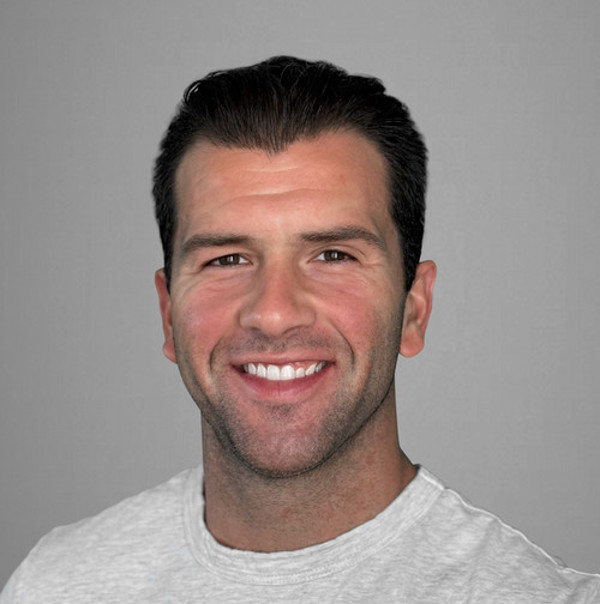Hitting the Brakes, but not too Much
By Tom Porter“Imagine you’re in a car that’s doing eighty-five in a sixty-five mile-per-hour zone,” said Assistant Professor of Economics Matthew Botsch. “You need to slow down but you don’t want to slam on the brakes. You want to do it gradually.”

This is an analogy Botsch likes to use when explaining the situation policymakers at the US Federal Reserve find themselves in right now. With annual inflation at nearly 8 percent—a forty-year high—Fed officials recently raised the benchmark cost of borrowing, which was near zero, by twenty-five basis points, or a quarter of 1 percent, and signaled there would be several more rate hikes to come. Boosting interest rates is a standard monetary tool for dealing with high inflation as it slows down spending, he explained. “It’s like putting the brakes on, but if you slam them on too hard, we could come to a screeching halt. We need to tap the brakes. What we’re looking for,” said Botsch, using another transportation metaphor, “is a soft landing.”
How did inflation get so high? “In 2019 and the start of 2020, the US economy was operating pretty close to what economists would call full employment while inflation remained low, between 1 and 2 percent,” said Botsch, who in July will be promoted to associate professor with tenure. “Then the pandemic happened, and policymakers went into overdrive to get the economy out of a recession. The Fed cut rates to zero and both the Trump and the Biden administrations responded with a series of aggressive stimulus packages, including directly mailing checks to people. The pandemic-induced recession was a very brief one,” Botsch explained, “lasting just a couple of months, and as the US economy emerged from this downturn, two factors came together that caused inflation to rise sharply.”
The Demand Side: People rapidly returned to work after the lockdowns ended, or in some cases, flush with stimulus cash, decided not to. Either way, they had lots of money to spend, which helped drive up prices, said Botsch. “There was a lot of debate in policy circles in March and April of 2021 about the Biden stimulus plan and whether it was too large. At this point we were a year past the nadir of the recession and the economy was recovering very rapidly by many measures. However, job growth was coming in fits and starts. There was still a shortfall of about eight million jobs compared to February 2020, so the Fed continued to keep interest rates extraordinarily low.”
The Supply Side: Numerous supply-chain issues also contributed to inflation, said Botsch, as labor shortages and the stresses of the pandemic disrupted the normal ebb and flow of goods and services. “We had container ships sitting unloaded at places like the Port of Los Angeles and other factors like timber prices skyrocketing because we couldn't cut down trees fast enough to meet the demands of the construction industry,” he added.
“It's the rare confluence of these two factors that lies behind the recent spike in inflation,” said Botsch. “We faced a similar situation in the late 1940s and early ‘50s, when the US economy, having expanded massively during the war, was faced with a huge influx of labor as troops were demobilized and wartime price controls were relaxed.”
Botsch pointed out that on this and other occasions when the US economy showed signs of overheating, the Fed has fallen short when it comes to achieving the desired soft landing. “This is not to criticize the policymakers, however,” he added, “because they have an exceedingly difficult job.”
Botsch likes to refer to a quote by William McChesney Martin, who was Fed chair back in the 1950s and ‘60s, as a way of illustrating the challenges policymakers face in setting interest rates. “Martin said it was the job of the Federal Reserve to take away the punch bowl just as the party was getting going.”
Right now, said Botsch, economists will be anxiously observing the next cycle of interest rate rises and hoping for signs that this party hasn’t got out of hand.
This semester Botsch is teaching Principles of Macroeconomics (ECON 1102) and Behavioral Finance (ECON 3634).
Matthew Botsch writes: “In my intermediate macro class (ECON 2556), which I taught in spring 2021, we looked at the debate over the size of the Biden stimulus (the American Rescue Plan). I asked my students to read dueling op-eds by Paul Krugman and Larry Summers, who were on opposite sides of the issue, and watch video excerpts from a webinar where the two economists debated the issue.
Krugman was citing the slow recovery we experienced after the last recession, around 2010 and later, and arguing about the dangers of a slow recovery and a prolonged period of high unemployment; Summers was looking at the same historical data, but he was worried about the labor market recovering too quickly and how this might put upward pressure on wages, causing inflation.
We brought all this material to class and had a really engaging discussion about how they were citing and interpreting evidence, and what different assumptions they were making about the costs and benefits of more fiscal stimulus, to understand why they disagreed.”



